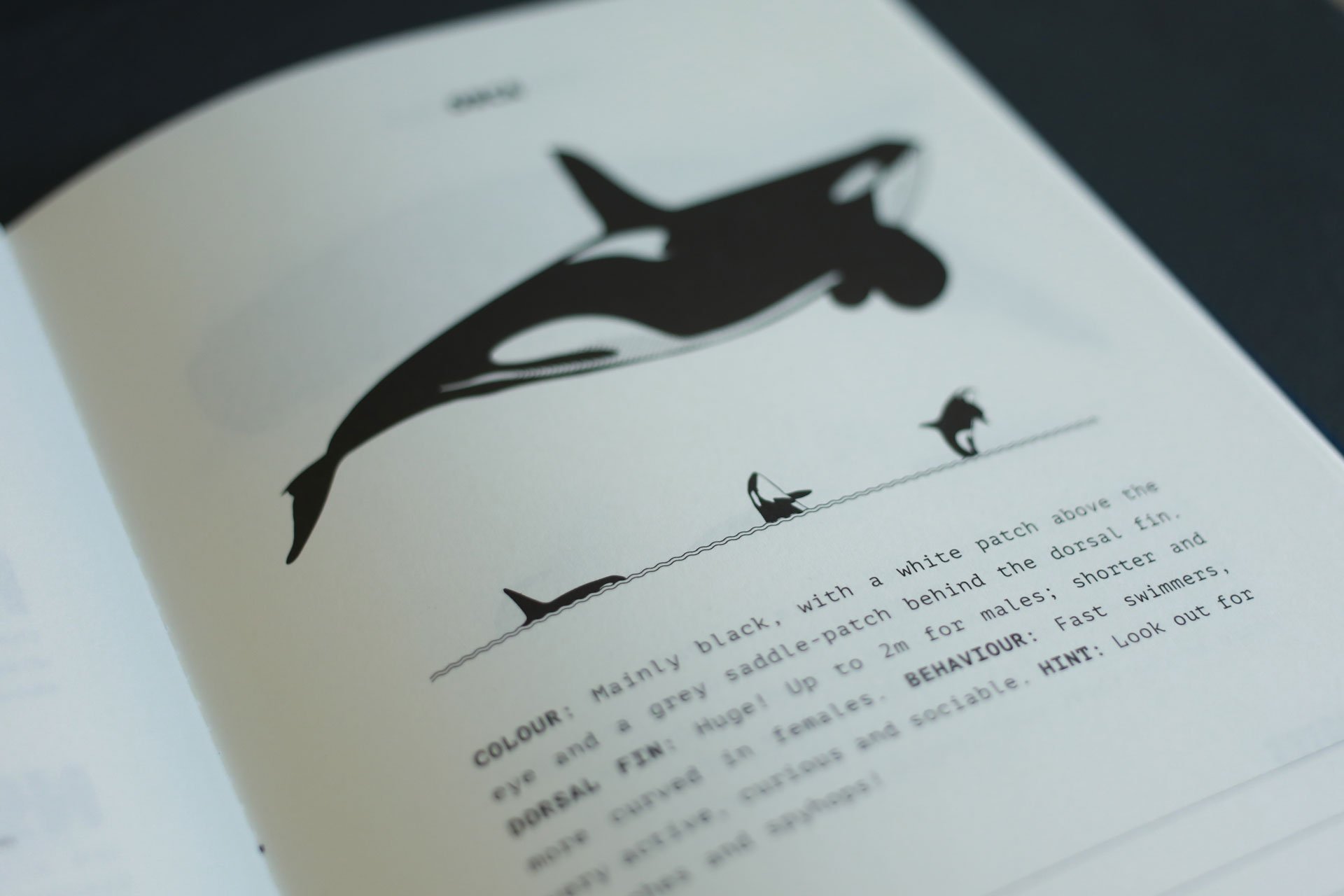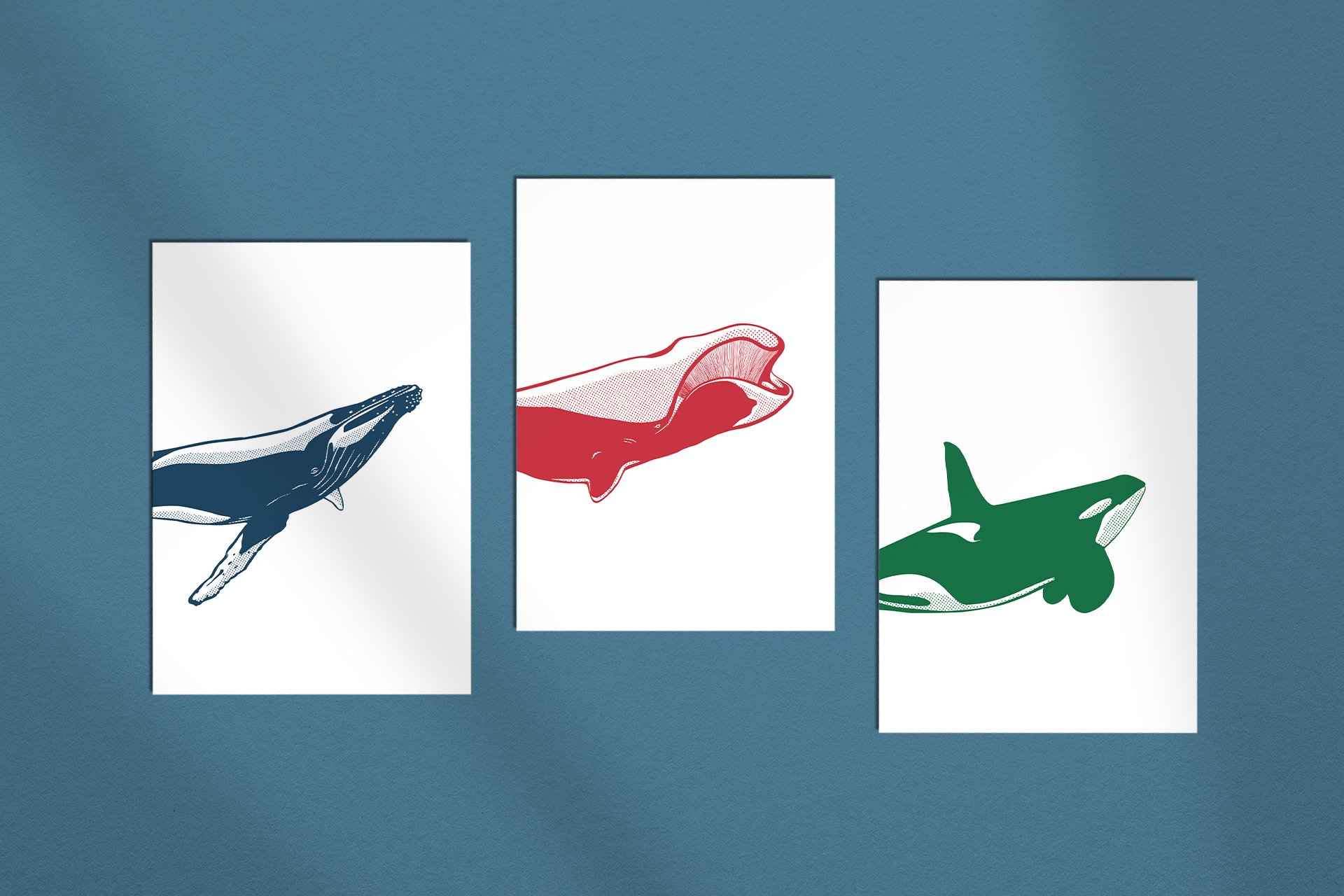NARWhals
The Unicorns of the seas – if you want to meet them, you will have to travel very far north.
Photo: Shutterstock
REVIEW: Narwhals
Narwhals live extremely far north, right at the edge of the pack ice. If you want to meet them, you will have to undertake a journey with the character of a serious expedition.
It is, of course, complete nonsense to include narwhals in the top ten of a whale-watching blog when it is actually completely impossible to ever encounter them on touristic routes. No whale lives further north than the narwhal, preferring to stay right on the ice edge, and even in summer they are rarely found further south than 70° north. So you have to travel very, very far north to have a chance of seeing narwhals. A trip with the character of an expedition.
The best-known and most impressive images of narwhals come from National Geographic photographer Paul Nicklen, who himself grew up high up in Arctic Nunavut. Although he is almost as confident in this environment as the local Inuit, it took him over ten years and an ultralight aircraft (!) before he finally managed to get a shot of narwhals in Nunavut's breaking ice channels.
Whales that live in such remote areas really have no place in a whale-watching blog. But sometimes you also have to have unrealistic goals.
“It is likely that the tusk functions like a sensory organ, allowing narwhals to detect the temperature, salinity and pressure of the water – quite a useful function when living close to the ice edge while constantly on the lookout for cracks in the ice.”
Narwhals are the unicorns of the sea – mythical creatures, only in reality, because narwhals really do exist. However, they are extremely shy and reclusive.
Their unicorn is not a horn, but a tooth that breaks through the upper lip on the left side of almost all young males. It is twisted in a spiral, weighs a good 10 kilos and can grow up to 3 metres long. Some males even have two such teeth, while females, with very few exceptions, have none at all.
The purpose of this tooth is not yet fully understood. It was once thought to have magical healing powers, especially in Asia, where tiger testicles and shark fins are also believed to have healing powers, so narwhals were lucrative prey for the Asian market.
In Europe, the narwhal tooth was simply sold by clever traders as the horn of the fabulous unicorn, probably at a much better price. Either way, narwhals were heavily hunted by whalers in the 19th and 20th centuries, mainly for their tooth.
In Europe, the narwhal tooth was sold by clever traders for many centuries as the horn of the fabulous unicorn.
Today it is assumed that the tooth is a secondary sexual characteristic – the larger the tooth, the higher the status of the male, the more females in the mating season.
On the other hand, however, it is very likely that the tooth also functions as a sensory organ that allows narwhals to detect the temperature, salinity and pressure of the water – a rather useful function when living close to the ice edge and constantly on the lookout for cracks in the ice. Furthermore, a tusk like this is probably also great for fighting with rival males.
A mysterious tusk and absolute inaccessibility in the high Arctic Ocean – it's this combination that makes the narwhal so fascinating and mysterious.
Photo: Shutterstock
Size
Males grow to 4 to 6 metres, females 3.5 to 5 metres. Weight: up to approx. 1.5 tonnes.
Colour
Grey to brown, speckled all over the body, almost white on the underside. Young animals are grey, becoming lighter with age, very old animals are almost white.
FORM
Small head with short snout and distinct melon. Compact body, but much more streamlined compared to the somewhat bulky beluga.
Blow
The narwhal's blow is very low, inconspicuous and not particularly loud.
Fin
Narwhals do not have a fin, but instead have a small hump like belugas.
FLUKE
With age, the fluke becomes more and more deformed until it is almost heart-shaped in old animals.
Behaviour
Fast swimmers, very shy, avoid people. Quite acrobatic, frequent spy-hopping.
Dives
Narwhals can dive to depths of up to 1,500 metres. They usually stay underwater for between 7 and 20 minutes.
Numbers
Unclear, there are probably still around 80,000 animals worldwide that are only regionally endangered.
Photo: Shutterstock
CHECKLIST: Narwhals
Male narwhals have a two to three metre long tusk, which makes them unique and unmistakable.
Narwhals move extremely quickly and inconspicuously at the surface, usually only being seen for a very short time before diving down again for several minutes. Only during their migrations do they remain at the surface most of the time, with the males occasionally sticking their tusk out of the water while breathing.
“Narwhals can be very acrobatic. They like to hit the water with their flukes and flippers, often look around and, depending on their diving depth, sometimes lift their heart-shaped flukes out of the water.”
Individual groups of narwhals are usually separated by sex and age – females with calves in one group and males with young in another. The female groups usually stay a little closer to the coast than the males.
Narwhals can be very acrobatic. They like to slap the water with their flukes and flippers, often look around and, depending on their diving depth, sometimes raise their heart-shaped flukes. They do not breach, at the most they perform a small leap forwards when surfacing. Males sometimes fence with their tusks.
Photo: Oliver Dirr / Whaletrips
Where and when: Narwhals
You have the best chance of encountering narwhals in summer on the coasts of Arctic Bay, Pond Inlet or Resolute Bay in Arctic Canada and also in Thule, in the far north of Greenland.
Observing narwhals as a standard tourist is largely impossible, as they are the northernmost living whales of all. Although they can be found throughout the Arctic Ocean, they are always close to the ice edge.
While they migrate as far north as possible in smaller groups in winter, they gather in much larger numbers near the coast in spring and summer, usually in cold, deep bays and straits as they follow the breaking ice. Sometimes hundreds or thousands of animals gather here. Narwhals are relatively territorial and return to the same areas again and again in spring, depending on the ice conditions.
The ideal companion for your next whale trip: In our shop you will find our TRAVEL NOTES in five great colours – with the most important whale information for your trip and plenty of space for your own notes, observations and memories. Order now!
There are large populations around Greenland and in the Arctic waters of the Canadian province of Nunavut. Observing narwhals in winter is rather impossible at these latitudes – too dark, too cold, too rough.
In spring and summer, the best chances are on the coasts of Arctic Bay, Pond Inlet or Resolute Bay in Arctic Canada as well as in Thule in the north and Umanak in the west of Greenland. However, a visit to these places has the character of an expedition.
If you are very lucky, you may also encounter a narwhal in Québec – and one in particular. A single male lives in the St. Lawrence, which somehow got lost in the south. It was taken in by a group of belugas there and seems to have settled in quite well: It is sighted every few months and has so far made no attempt to move north again.
Even more Whales
〰️
Even more Whales 〰️
Whaletrips Shop
The ideal Companion for your whale trip
All the whale facts you need while on the road – with plenty of space for own thoughts and observations!
Whaletrips Shop
Our Whales as Cards and Stickers
Colourful, finely illustrated, ready to stick on: Our whales are now available as stickers and greeting cards!
Whaletrips Shop
Beautiful whale Notebooks
Whether for travelling or at home: our high-quality whale notebooks come in five beautiful colours!
Whaletrips Shop
Our favourite photos for your home
Brightens any wall: a selection of our favourite motifs is available as elegant fine art print for your home.











